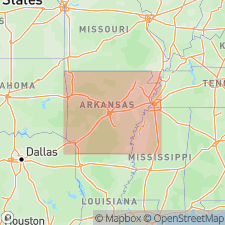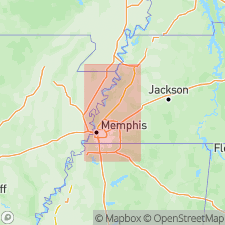
- Usage in publication:
-
- Crowley's Ridge Loess
- Modifications:
-
- Named
- Dominant lithology:
-
- Loess
- AAPG geologic province:
-
- Upper Mississippi embayment
Summary:
Name Crowley's Ridge Loess designated for loess underlying Loveland/Sicily Island Silt in eastern AR. Consists of a lower sandy unit and an upper loess with well developed paleosol. Thickness 2.6 m. Overlies Pliocene sand and gravel containing a weak paleosol. Correlates with loess of LA. Age is Pleistocene.
Source: GNU records (USGS DDS-6; Reston GNULEX).

- Usage in publication:
-
- Crowleys Ridge Loess
- Modifications:
-
- Areal extent
- AAPG geologic province:
-
- Upper Mississippi embayment
Summary:
Pleistocene Crowleys Ridge Loess measured in western TN. Thickness of the loess in the Old River section, Tipton Co., is 4.5 ft. Thickness in well Ld:F-9, Lauderdale Co., is 9.5 ft. Gamma-ray logs indicate presence of a geosol at the top of the unit. The Crowleys Ridge underlies the Pleistocene Loveland/Sicily Island Loess and overlies Pliocene(?) fluvial deposits.
Source: GNU records (USGS DDS-6; Reston GNULEX).
For more information, please contact Nancy Stamm, Geologic Names Committee Secretary.
Asterisk (*) indicates published by U.S. Geological Survey authors.
"No current usage" (†) implies that a name has been abandoned or has fallen into disuse. Former usage and, if known, replacement name given in parentheses ( ).
Slash (/) indicates name conflicts with nomenclatural guidelines (CSN, 1933; ACSN, 1961, 1970; NACSN, 1983, 2005, 2021). May be explained within brackets ([ ]).

